Heel Problems
Both heel pain and heel spurs are frequently associated with an inflammation of the band of fibrous connective tissue (fascia) running along the bottom (plantar surface) of the foot, from the heel to the ball of the foot. The inflammation is called Plantar Faciitis. It is common among middle age adults especially those who are active and stand for long periods of time.
The condition occurs when the plantar fascia is strained over time beyond its normal extension limits, causing the soft tissue fibers of the fascia to tear or stretch. This leads to inflammation, pain, and possibly the growth of a bone spur where it attaches to the heel bone.
The inflammation may be aggravated by shoes that lack appropriate support, especially in the arch area, and by the chronic irritation that sometimes accompanies an active lifestyle.
Resting or sleep provides only temporary relief. When you resume walking, particularly the first step out of bed in the morning, you may experience pain and stiffness. The pain slowly resides as the fascia stretches, or even disappear, but that may be just a false sense of relief. The pain often returns after prolonged rest or extensive activity.
How to Prevent Heel Problem?
A variety of steps can be taken to avoid heel pain and associate Plantar Fasciitis
- Wear shoes that fit well in front, back and sides and have shock absorbent soles, rigid shanks and supportive heel counters.
- Wear the proper shoes for each activity.
- Do not wear shoes with excessive wear on heels or soles.
- Prepare properly before exercising. Warm up and do stretching exercises before and after running.
- Pace yourself when you participate in athletic activities.
- Don't underestimate your body's need for rest and good nutrition.
- If overweight, try to diet and exercise.
Treatment
If pain and other symptoms of inflammation-redness, swelling, heat-persist, you should limit normal daily activities and contact a doctor of podiatric medicine.
The podiatric physician will examine the area and may perform diagnostic X-rays to rule out problems of the bone.
Early treatment might involve oral or cortisone type anti-inflammatory medication, exercise and shoe recommendations, taping or strapping, or use of shoe orthotic devices. Taping or strapping supports the foot, placing stressed muscles and tendons in a physiologically restful state. Physical therapy, such as massage and laser therapy, may be used in conjunction with such treatments.
A functional orthotic device may be prescribed for correcting biomechanical imbalance, controlling excessive pronation, and supporting of the ligaments and tendons attaching to the heel bone. Custom made orthotic devices effectively treats the majority of heel and arch pain without the need for surgery.
In relatively few cases of heel pain are more advanced treatments or surgery required. If surgery is necessary, it usually involves the release of the plantar fascia, and a possible heel spur excision. Chronic heel pain lasting greater than three weeks should be addressed by a podiatric physician.
Haglunds Deformity
Haglund's Deformity (also known as pump bump or retrocalcaneal bursitis) is a painful enlargement on the back of the heel bone that becomes irritated by shoes. It normally appears as a red, painful, and swollen area in the back of the heel bone. Women tend to develop the condition more than men because of irritation from rigid heel counters in shoes that rub up and down on the back of the heel bone. Irritation can be resolved with anti-inflamatories and icing.
If the problem persists a surgical correction to reduce the size of the posterior lateral aspect of the heel bone is done. A complete description of the surgery will be discussed by your Podiatric physician. X-rays and a biomechanical exam will be necessary to determine the extent of surgery and the down time needed for recovery.
Heel Fissures
Heel fissures is the term for cracking of the skin of the heels. This can be a painful condition that can cause bleeding. Dryness and Open-backed sandals or shoes that allow more slippage around the heel while walking are often culprits that cause heel fissures. Skin conditions, such as eczema and psoriasis, can also lead to heel fissures. The skin thickens as a result of the friction. Wearing proper shoes and the use of deep skin moisturizers and lotions can reduce the dryness associated with the condition and allow the foot to heal. A few visits to your Podiatrst for a reduction of the callused skin along with an Rx for skin emolients can completely resolve this issue.
As a general rule, Heel Problems and its procedures are performed on an out-patient basis in an Alberta Health Services (AHS) approved Surgical Center or in a Hospital. Surgical procedural costs are covered by AHS or the patient may opt for private surgery to avoid a waiting time. A visit to Feldman & Leavitt Foot And Ankle Specialists will CLEARLY define all available patient options.







